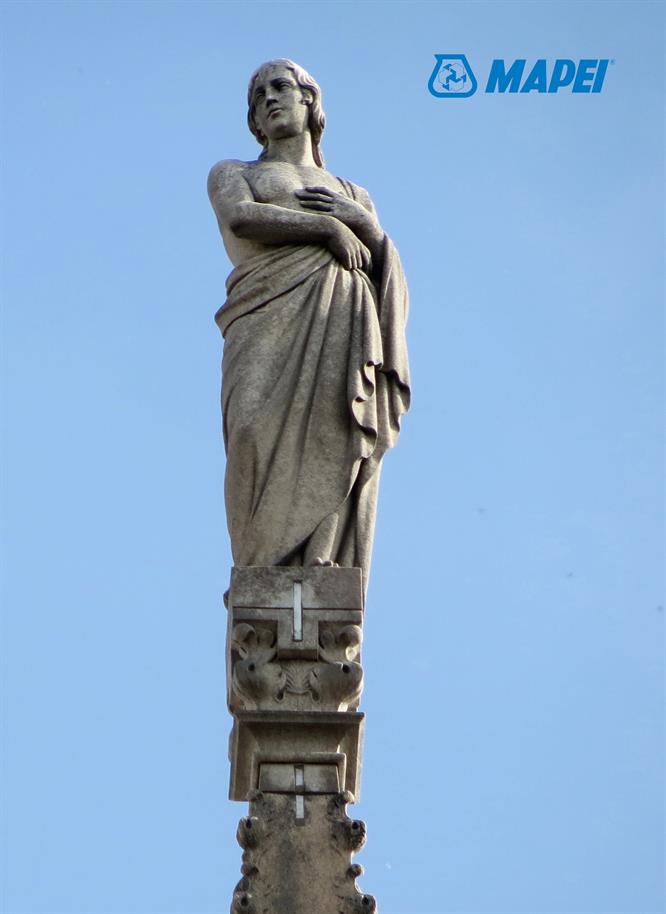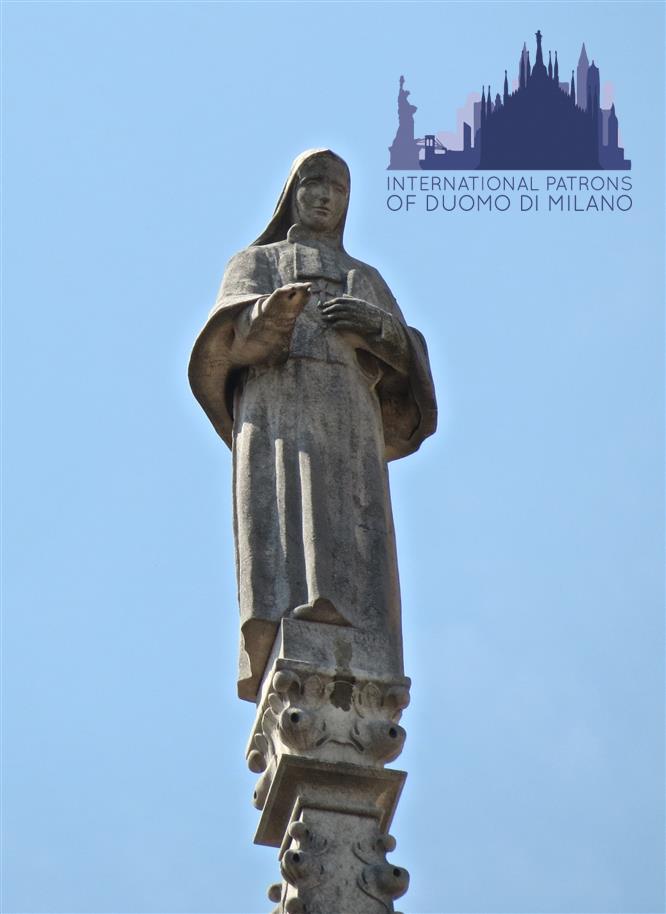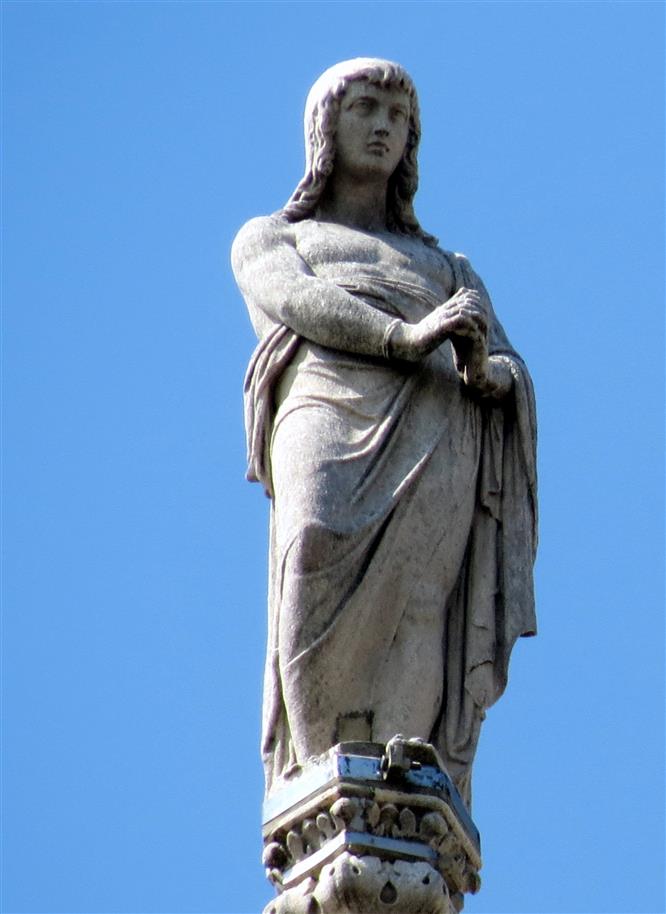San Nabore was one of the first Patron Saints of Milan, along with St. Felix. The story goes that Nabore was a North African soldier who came to Milan in the 4th century to serve in Maximian’s army. Maximian was the governor of north-western regions at the time. Here he was converted and became a Christian, and was executed in Lodi Vecchio as a deserter. It was actually a purge of Christians from military ranks. Indeed, the persecution of Christians had already broken out in the East in 303, especially against Christians in the military ranks. Complying with the invitation of eastern governors, Maximian himself ordered the purge in his army. In 311 Nabore’s body, along with that of San Felice (St. Felix), was taken from Lodi Vecchio to the Milanese basilica, which was later called “Naboriana”. Their cult gradually faded in the course of time, until the Franciscans revived it in the 13th century. In 1799, when the ancient Early Christian basilica was closed, the remains of the two martyrs were moved to the Basilica of Sant’Ambrogio (St. Ambrose), but the two busts with the skulls disappeared. They were found 160 years later in a Belgian antique dealer’s shop. The statue of San Nabore, which can be admired today on façade spire G9 belongs to the group of statues that were made around the mid-1900s to be placed on the top of spires that were “empty” after the 1943 bombings of Milan. In fact, San Nabore was produced by Mario Bassetti in 1949. The statue portrays a young saint who was already a prisoner: indeed, his right hand is tied to a tree trunk behind him, which forces him to be still, while the left hand firmly rests on the chest, holding a crucifix, the sign of the Saint’s deep faith.
ST. NABOR
Symbol: Palm, Cross
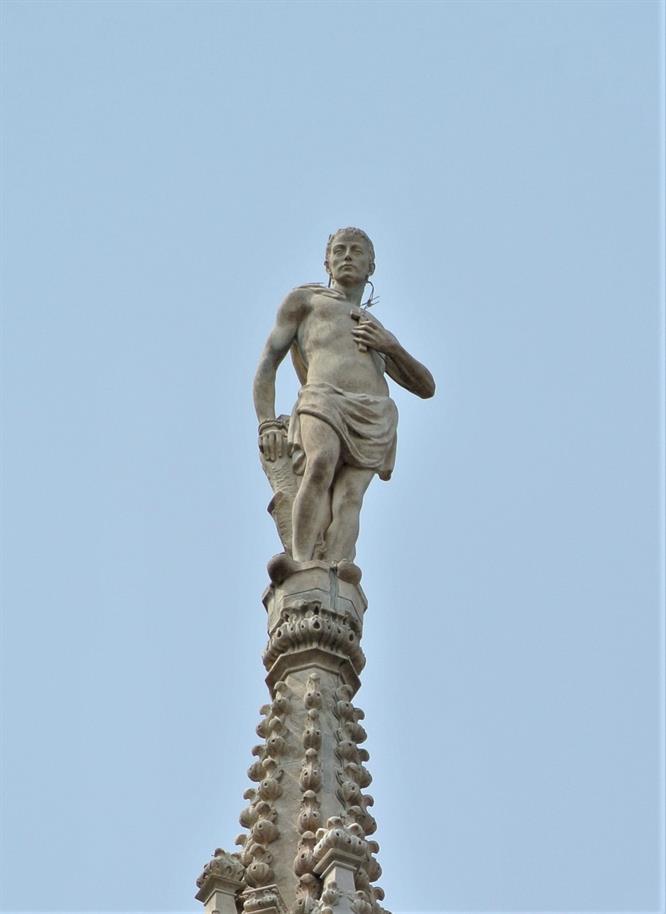
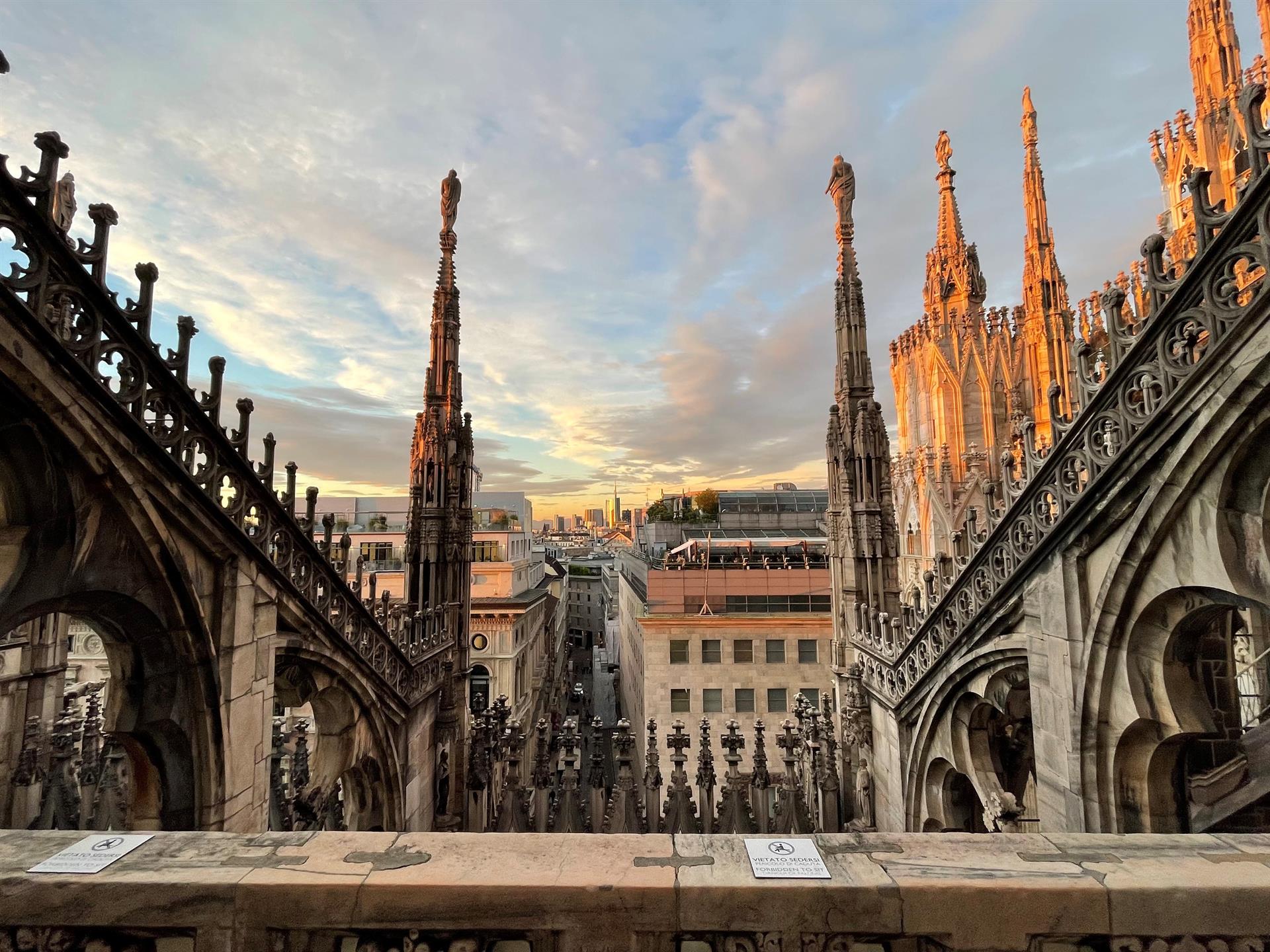
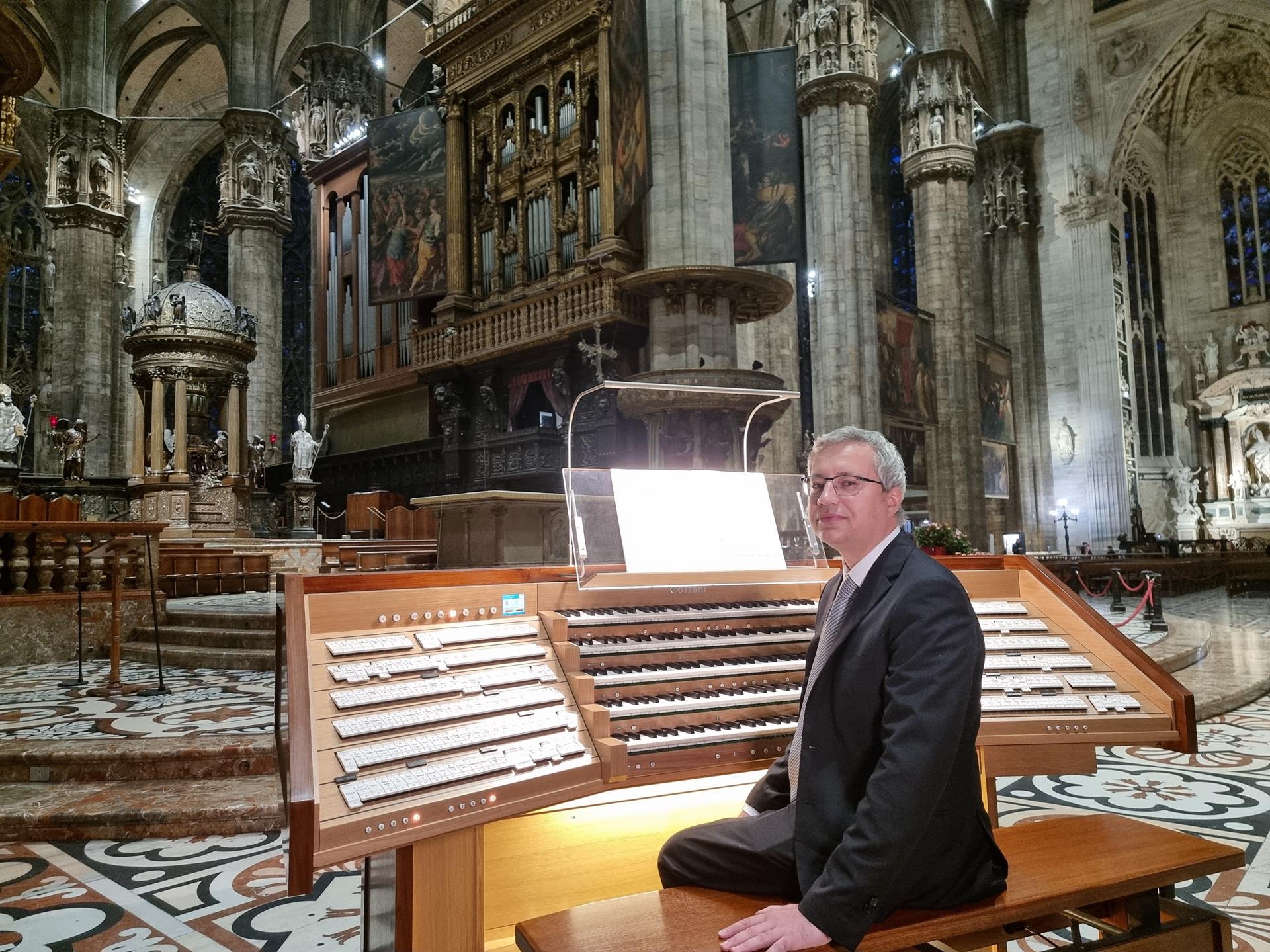
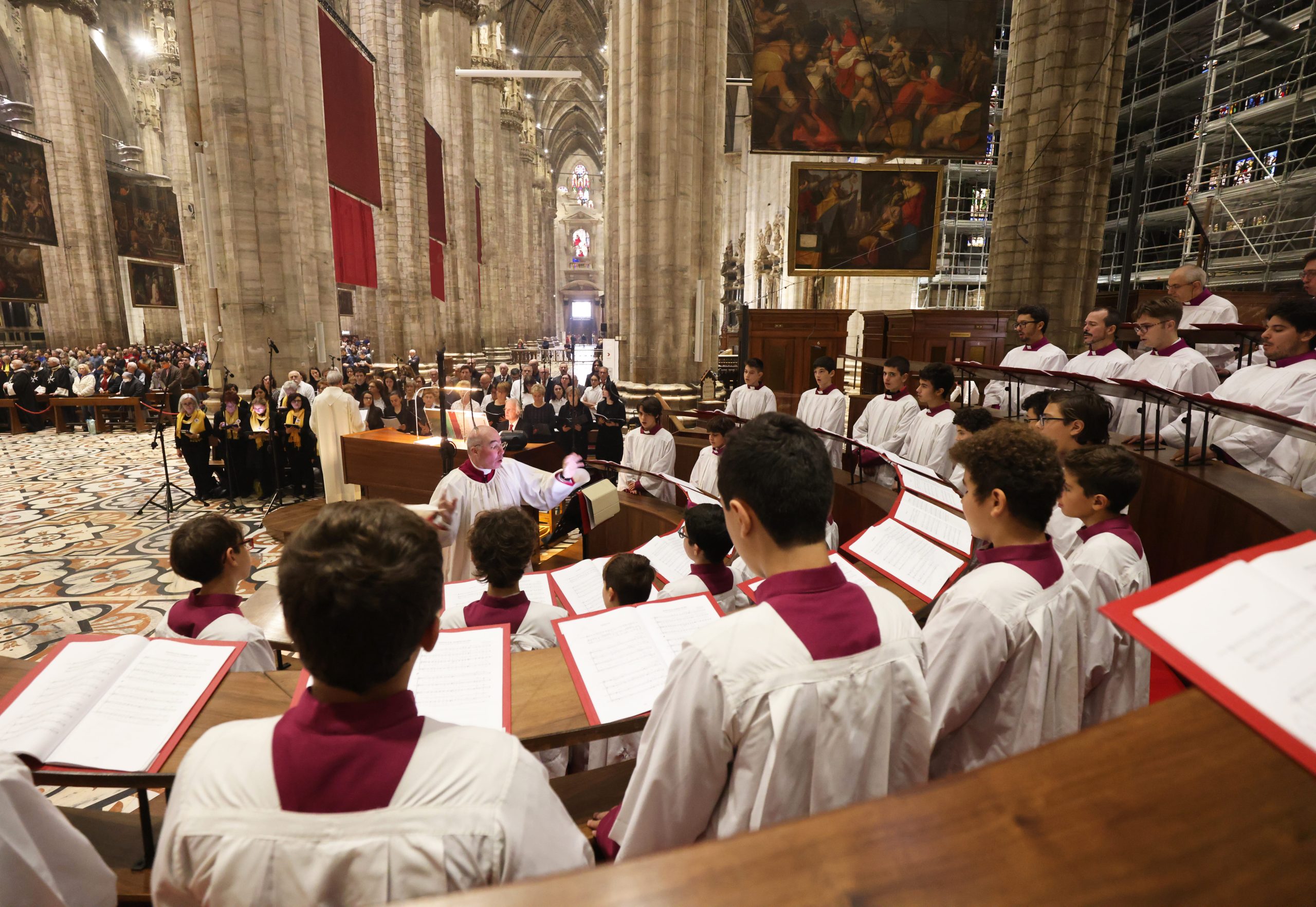
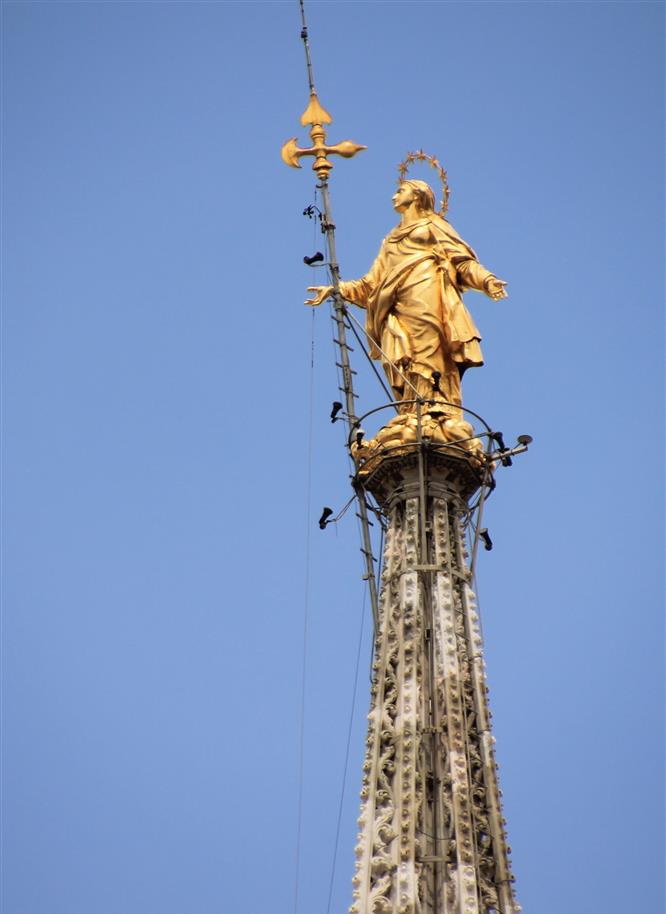
 Tiburio
Tiburio